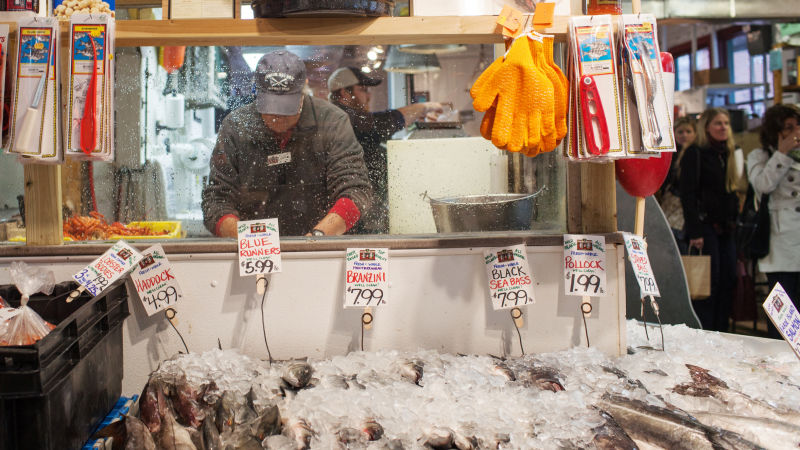Order a rockfish at a restaurant in Maryland, and you'll likely get a striped bass. Place the same order in California, and you could end up with a Vermilion rockfish, a Pacific Ocean perch or one of dozens of other fish species on your plate.
This jumble of names is perfectly legal. But it's confusing to diners — and it can also hamper efforts to combat illegal fishing and seafood fraud, says the ocean conservation group Oceana.
Under current Food and Drug Administration rules, a single fish species can go by multiple names from the time it's caught to the time it ends up on your plate. Conversely, lots of different fish legally can be sold under a single name.
For example, that "grouper" on a menu could be one of 64 different species. It could be a fish known by the common name sand perch (scientific name: Diplectrum formosum), which is plentiful. Or it could be a goliath grouper, a critically endangered species. The FDA says all can be sold under the acceptable market name "grouper."
Oceana wants the entire supply chain — from boat to plate — to ditch the FDA's list of "acceptable market names" for seafood. Instead, it wants the FDA to require that a species' Latin scientific name or common name be used in all cases.
What's In A Fish Name?
A single fish species can go by multiple names from the time it's caught to the time it ends up on your plate. Conversely, lots of different fish legally can be sold under a single name. Here's a look at some popular fish with multiple identities.
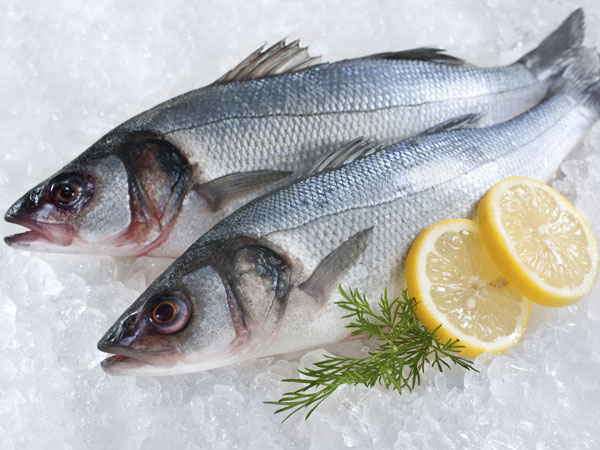
“Sea bass”
Based on their common names, you might not think these fish have much in common. But the FDA’s official Seafood List says it’s OK for a fishmarket or chef to label all of these as “sea bass.”
- Wreckfish (Polyprion americanus)
- Atlantic creolefish (Paranthias furcifer)
- Pacific creolefish (Paranthias colonus)
- Hapuka (Polyprion oxygeneios)
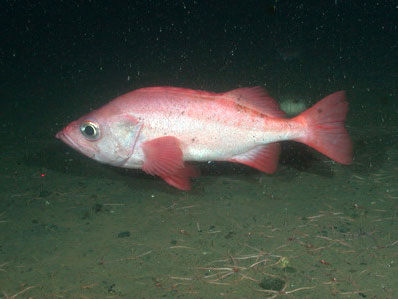
“Rockfish”
In parts of the East Coast, it’s common to call striped bass “rockfish” — and it’s legal, so long as the fish is sold in the state where it’s caught. But cross a state line, and this tasty fish will need to be called “bass” — the FDA’s only acceptable market name. There are plenty of other “rockfish” out there, though. More than 60 fish species have the FDA’s permission to be sold as “rockfish.” That includes the fish listed below, whose common names don’t even include the word “rockfish:”
- Pacific Ocean perch (Sebastes alutus)
- Chilipepper (fish) (Sebastes goodei)
- Cowcod (Sebastes levis)
- Treefish (Sebastes serriceps)
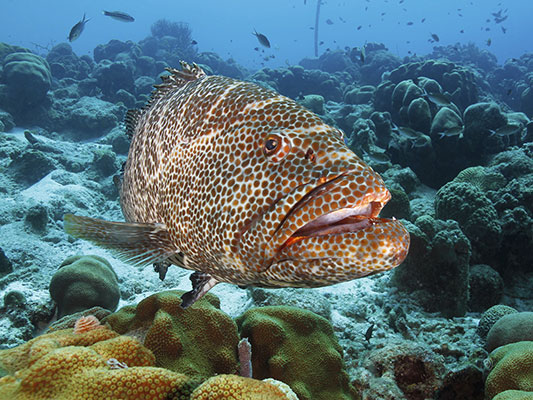
“Grouper”
Surprise! That tasty pan-seared grouper you ordered for dinner could be one of 64 different species, including:
- Sand perch (Diplectrum formosum)
- Coney (Cephalopholis fulva)
- Graysby (Cephalopholis cruentata)
- Tiger grouper (Mycteroperca tigris)
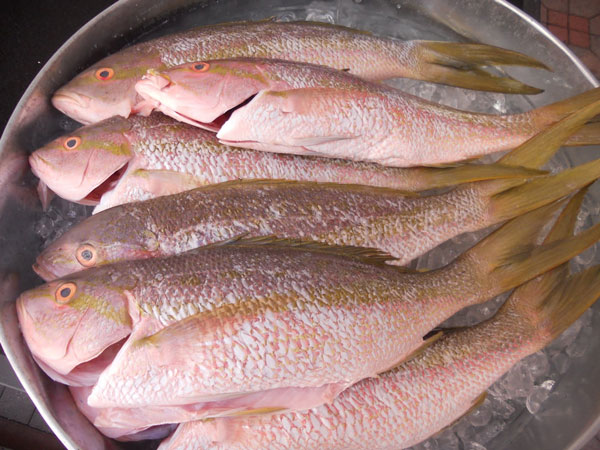
“Snapper”
If these fish show up in your seaside snapper sandwich, that’s OK with the FDA. Their common names are all different, but what they all share is that “snapper” is their FDA-approved accepted market name. All told, some 56 fish species can legally be sold as snapper.
- Wenchman (Pristipomoides aquilonaris)
- Crimson jobfish (Pristipomoides filamentosus)
- Pinjalo (Pinjalo pinjalo)
- Yellowtail snapper (Ocyurus chrysurus)
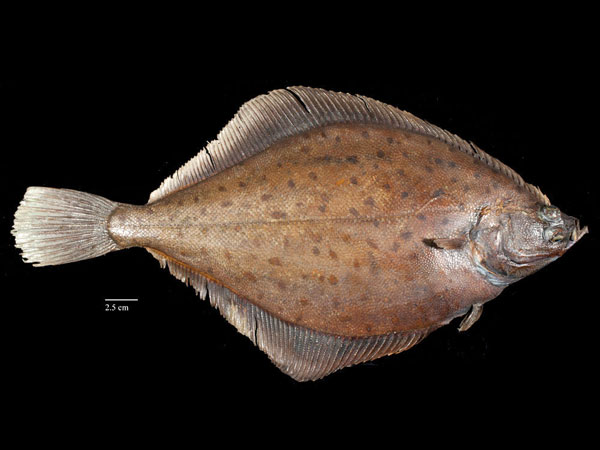
“Sole”
If it’s a flat fish, can you just stuff it and call it sole? For these fish, the answer is yes. Never mind that the common names for these fish all contain the word flounder. And one of our examples, the yellowtail flounder, is even listed as a species of concern by the International Union for Conservation of Nature.
- Blackback flounder (Pseudopleuronectes americanus)
- Yellowtail flounder (Limanda ferruginea, aka Pleuronectes ferrugineus) — species of concern
- Bigmouth flounder (Hippoglossina stomata)
- Witch flounder (Glyptocephalus cynoglossus)
Source: FDA Seafood List
Credit: Clare Leschin-Hoar, Maria Godoy and Alyson Hurt/NPR
